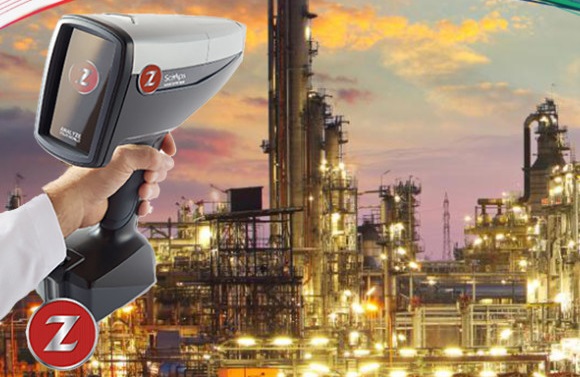Northern ANI Solutions
LIBS

The Z is based on a well-established technology called laser induced breakdown spectroscopy (LIBS) or LIBZ as we like to call it. With LIBS, a laser is fired at a sample, heating it almost instantaneously and creating an electron plasma. As the plasma cools after about 1 us, the electrons return to the atoms that constitute the sample, emitting light at various discrete wavelengths. The spectrometer resolves the wavelengths and the processor determines elements present and concentrations. LIBZ is an optical technique, not x-ray. The measured light is in the UV, visible and NIR spectral region.Therefore many more elements can be analyzed compared to portable XRF. Elements hydrogen (H) to sodium (Na) may be measured by the Z, but cannot be measured by portable XRF. This includes critical elements like C, Li, Be, B, Na and others. The Z measures elements Mg, Si, Al at much lower detection limits, compared to portable XRF due to the optical nature of the technology. Laser-induced Breakdown Spectroscopy (LIBS) offers an alternative technique to both handheld XRF and spark OES for the analysis of a broad range of elements and sample types. In the LIBS process, a plasma is creat-ed at the material surface, as in spark optical emission spectroscopy (OES). Spectral lines from the various ele-ments present are measured as the plasma cools. The wavelength of specific lines reveals the elements pres-ent, and the intensity of the light at a given wavelength is related to the concentration of each element.
Common applications
Alloys & Metals, PMI, NDT, Oil & Gas, Plastics & Coatings, Research & Education, Scrap Sorting & Recycling, Laboratories, Pre-Screen Samples prior to Dilution for ICP, AAS and Regulatory Screening.
Alloys & Metals, PMI, NDT, Oil & Gas, Plastics & Coatings, Research & Education, Scrap Sorting & Recycling, Laboratories, Pre-Screen Samples prior to Dilution for ICP, AAS and Regulatory Screening.
The Z100 is a smaller and lighter handheld LIBZ unit and is a great alternative for many HHXRF or portable Arc/Spark applications.
The Z500 is the most advanced handheld LIBZ unit available. It enables analysis for elements as light as H (Z=1) and as heavy as U (Z=92), and provides the best possible limits of detection.

